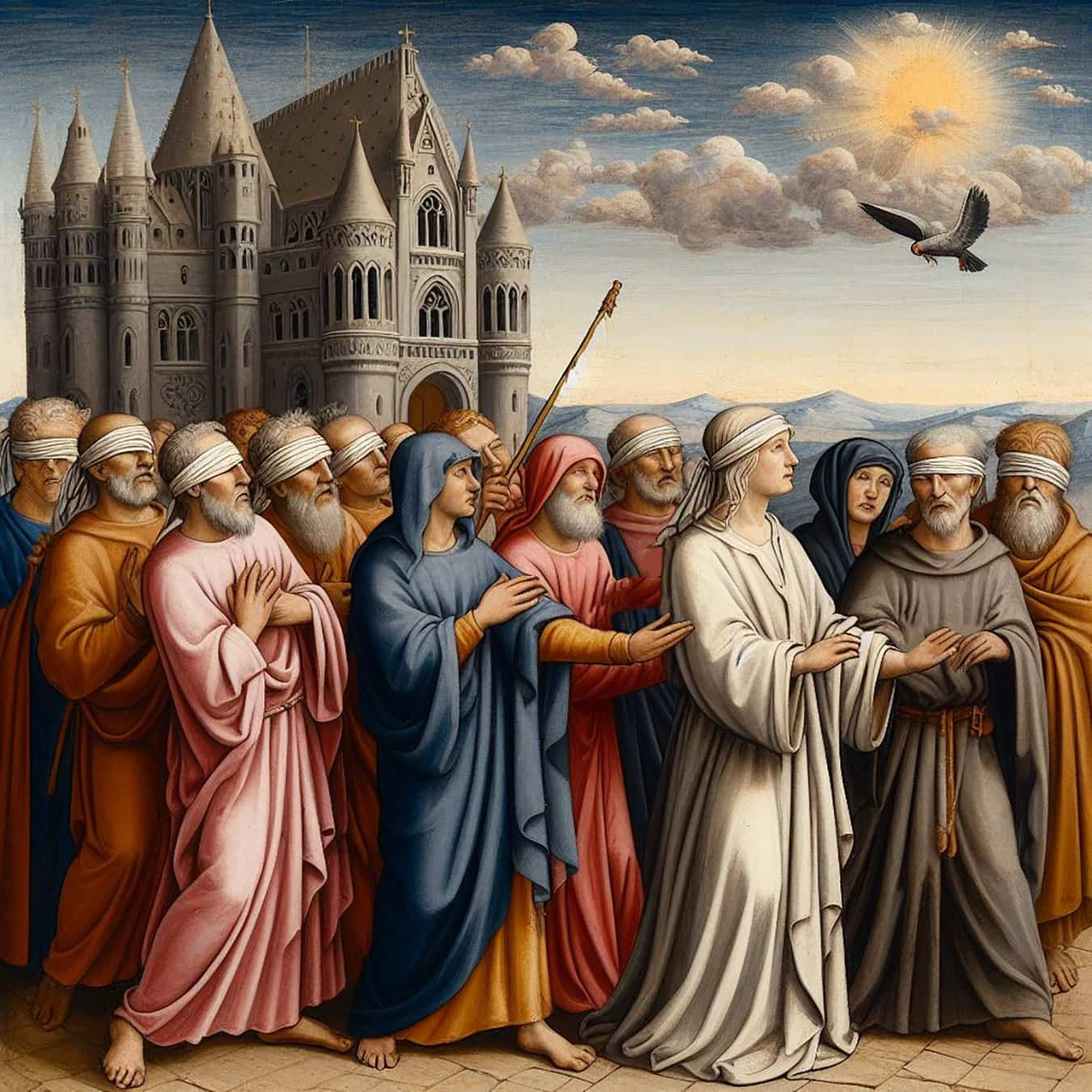In the parable known as the Blind leading the Blind Jesus uses the image of a blind person leading another blind individual, and both fall together into a pit. This parable is recounted in the Gospels of the New Testament in the Bible, both by Matthew (15:14) and Luke (6:39). It is hence assumed that both evangelists found the saying in the Q source, a hypothetical common source. The saying is also present in the Gospel of Thomas (Logion 34).
Content
In the version from the Gospel of Matthew, Jesus is questioned by the Pharisees about why his disciples do not wash their hands before eating. Jesus responds that it is not what enters a person through the mouth that makes them unclean but what comes out of the mouth. When his disciples point out that these words offended the Pharisees, he tells them to leave the Pharisees alone, as they are “blind guides.” He states that if a blind person leads another blind person, both will fall into a pit.
In Luke’s version, the parable is presented in a completely different context within a sequence of various sayings of Jesus. Unlike Matthew, here, the statement is phrased as two rhetorical questions and is introduced by a short introductory sentence (“He also told them a parable: …”). Some interpreters consider the version with two questions as the more original form of the saying.
The Gospel of Thomas presents the saying in the form of a conditional clause, similar to Matthew.
Interpretation
According to Fritz Rienecker, blindness symbolizes the lack of spiritual understanding among the Pharisees. Following them and their deficient spiritual ideas leads to falling into a pit, signifying not entering the Kingdom of God.
Wolfgang Wiefel points out the claim of spiritual leaders in Judaism to be “guides of the blind.
” In the Gospel of Luke, Jesus demands that leaders of the disciple community must have sight, as only the sighted can show the way.
Artistic Reception
Various artists have interpreted the parable, with the most famous work being “The Blind Leading the Blind” (1568) by Pieter Bruegel the Elder, displayed at the Museo di Capodimonte in Naples.
Elias Canetti, the Nobel laureate in literature for 1981, provides a description of this painting in the chapter “Simson’s Blindness” in the second volume of his autobiography, “The Torch in My Ear” (page 111). This painting, like Simson’s blindness, serves as a key motif in his novel “Auto-da-Fé.
“
Writer Gert Hofmann presented a narrative titled “The Blind Leading” (Darmstadt 1985), creating a masterful story inspired by Bruegel’s painting.
Similar Parables in Other Cultures
According to Wiefel, the image of the blind leading the blind has a proverbial character in antiquity and is already known to Plato.
Similar parables about the blind leading the blind are found in Indian religious scriptures. In the Katha Upanishad, it is stated, “So the fools, like the blind led by one who is himself blind, keep running in vain.”
Early Buddhist Sutras in the Pali Canon also employ the parable: “Suppose there were a row of blind men, each in touch with the next: the first sees nothing, the middle sees nothing, and the last sees nothing. In the same way, Bharadvaja, the talk of the Brahmins turns out to be a row of blind men.”






